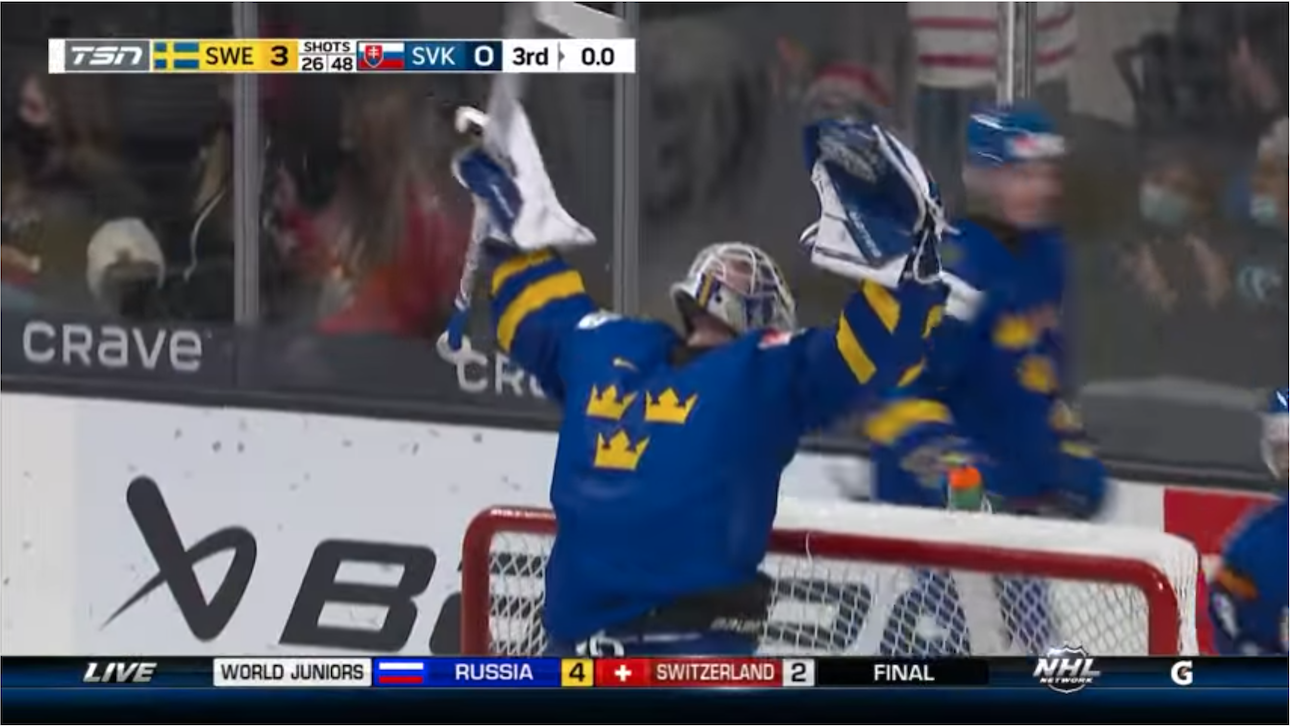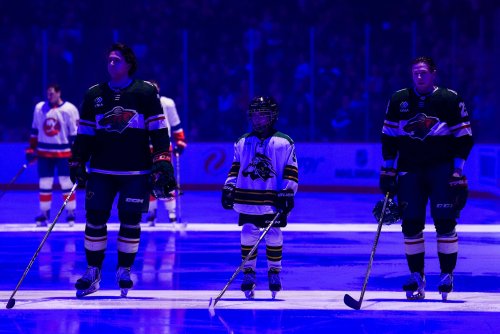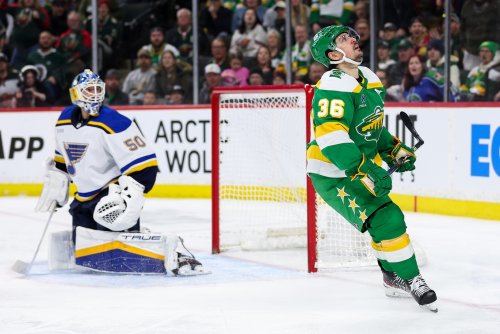
The Minnesota Wild just locked in another part of their bright future. Jesper Wallstedt, the goalie Minnesota took in the first round of the 2021 Draft, signed his entry-level contract Monday. It's not surprising — there wasn't any will he or won't he sign drama. But the signing is significant in that he will certainly begin his transition to North American hockey next year.
Now that ink has hit paper, we can ask ourselves the big question: When will he get to St. Paul? That sounds like an insane question to ask about a goalie who doesn't turn 20 until November. Look at the Wild's goalie depth chart, though, and you'll find that they kind of need him ASAP.
Marc-Andre Fleury, 37, may or may not return next year. Fleury has had a remarkably good performance since his age-30 season, with a .917 save percentage heading into last season. But last year, he posted a .908 (.910 in 11 games with Minnesota) and a .906 in the playoffs. Even if the Wild bring him back, can they get another strong season out of him at 38, or is he done?
You can also start asking these questions about Cam Talbot. Minnesota created controversy riding Fleury in Games 1-5 against the Blues, despite Talbot posting a .925 save percentage in 11 games after the trade deadline. However, Talbot had already lost his job by then with a .907 save percentage through 37 games. Minnesota simply didn't trust him.
With Kaapo Kahkonen gone, their organizational depth is limited to projects Hunter Jones (age 21) and Dereck Baribeau (23).
So, yeah, the Wild are ready for Wallstedt to take over the net at any time. Heck, they might have been prepared to do it two weeks ago if they could.
The issue, though: Is Wallstedt ready for the Wild? Or, more specifically, the NHL?
The phrases "recently-drafted goalie" and "now playing in the NHL" do not go together often. Goaltending is such a physically, mentally, and technically demanding position that it usually takes years for an NHL starter to develop and succeed.
Now, not all goalies fit on the same timeline. Sometimes you have an Andrei Vasilevskiy, who started 50 games at age 22 and has been consistently good since. At the other end of the spectrum sits Tim Thomas, who didn't make the NHL until 31 but became the best goalie in the world from ages 33 to 37. You just can't ever really know.
We know that goalies basically never play in the NHL less than two years after being drafted. The last player to play 10 NHL games in their Draft+2 season or younger was Marc-Andre Fleury, who played 22 games in his Draft+1 year in 2003-04. That's almost 20 years since we've seen a goalie as young as Wallstedt play even kinda big minutes.
The thing about Wallstedt, though, is he's wildly successful at the Swedish Hockey League, arguably a top-5 league in the world. Just playing in the Swedish league in his draft year was unprecedented. But Wallstedt took another step this year, showing he's perhaps the most advanced goalie prospect in a very long time.
Wallstedt's .918 save percentage was fourth in the entire SHL. It was also the highest save percentage by a Swede in their Draft+1 season this century. Compare what he did to fellow top goalie prospect Yaroslav Askarov (five months older than Wallstedt). He posted a .913 save percentage in the KHL, but in only six games. Wallstedt far surpasses Askarov in top league experience, with 45 career SHL games to Askarov's 16 in the KHL.
And hey, call it a small sample size, but Wallstedt has also out-performed Askarov in the few times they've been on a level playing field. Wallstedt has four appearances, and a .946 save percentage in the 2020 and 2021 World Junior Championships. Askarov posted a .902 in 12 games in those same tournaments. That also includes a game where Wallstedt out-dueled Askarov.
So maybe Wallstedt, who has so much success at high levels and isn't rattled by big stages, is the generational prospect who's ready for the NHL soon?
You can make that case. But the question is, how badly do you want to risk that?
The Columbus Blue Jackets must have thought they had a generational-type player in Steve Mason. He played 60 games for Columbus at 20 and dominated, winning the Calder Trophy with a .916 save percentage. Then the league adjusted to him, and by the time he adjusted back, he was 25 and on the Philadelphia Flyers. He had four good years in Philly but was out of the league by age-30.
Speaking of Philly, look at Carter Hart now. Hart looked generational after putting up a ridiculous .937 save percentage in the WHL in his two years after being drafted. The Flyers were desperate for goaltending and put Hart in the NHL at age-20. He started well enough, with a .915 save percentage in 71 games through two seasons. He's struggled mightily since then, though, finishing as the second-worst goalie in Goals Saved Above Expected over the past two years.
If those two players have anything in common that isn't shared with a success story like Vasilevskiy, it's experience in the AHL. Mason had just three AHL games in that Calder-winning season. Hart had slightly more experience as a pro rookie, with 18 games, but his .902 save percentage was hardly dominant.
On the other hand, Vasilevskiy got 37 games of AHL experience in his first two North American seasons. Put that against his 40 NHL appearances, and that's a pretty even split. More importantly, he was dominant in the AHL, with a .923 save percentage. He showed he was ready for more minutes and opportunities. However, as Matt Murray's career can attest, that doesn't always translate to lasting, uninterrupted success. To a degree, this is still an imperfect science.
So it's going to be tempting to throw Wallstedt into the NHL next year. Maybe he's the rare Fleury-type goalie who can rise to the challenge and beat those odds at a young age. But plenty of goalies have shown that there is such a thing as too much, too soon, and it'll be crucial to remember Wallstedt is just 19.
It's very simple: Wallstedt may be a special prospect, but the best-case scenario for him to enjoy a long, successful NHL career is for him to prove that he's ready as an AHL starter, then an NHL backup, before assuming the lion's share of the NHL minutes. If he gets the job because the Wild have no other choice but to throw him to the wolves, the organization will be playing a very dangerous game.
Think you could write a story like this? Hockey Wilderness wants you to develop your voice, find an audience, and we'll pay you to do it. Just fill out this form.






Recommended Comments
There are no comments to display.
Join the conversation
You can post now and register later. If you have an account, sign in now to post with your account.
Note: Your post will require moderator approval before it will be visible.